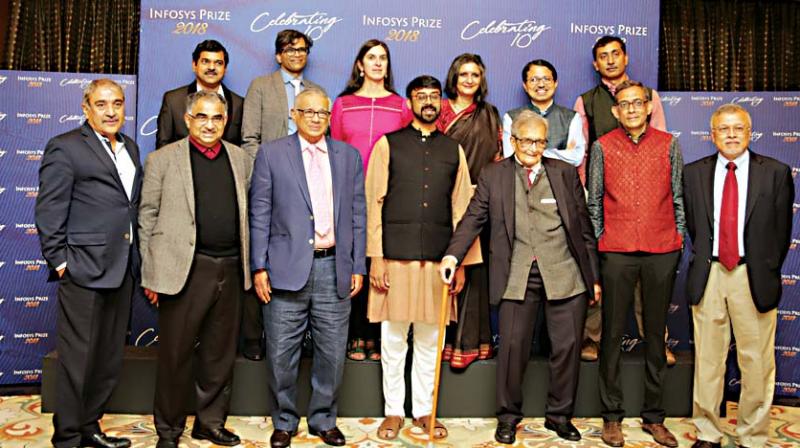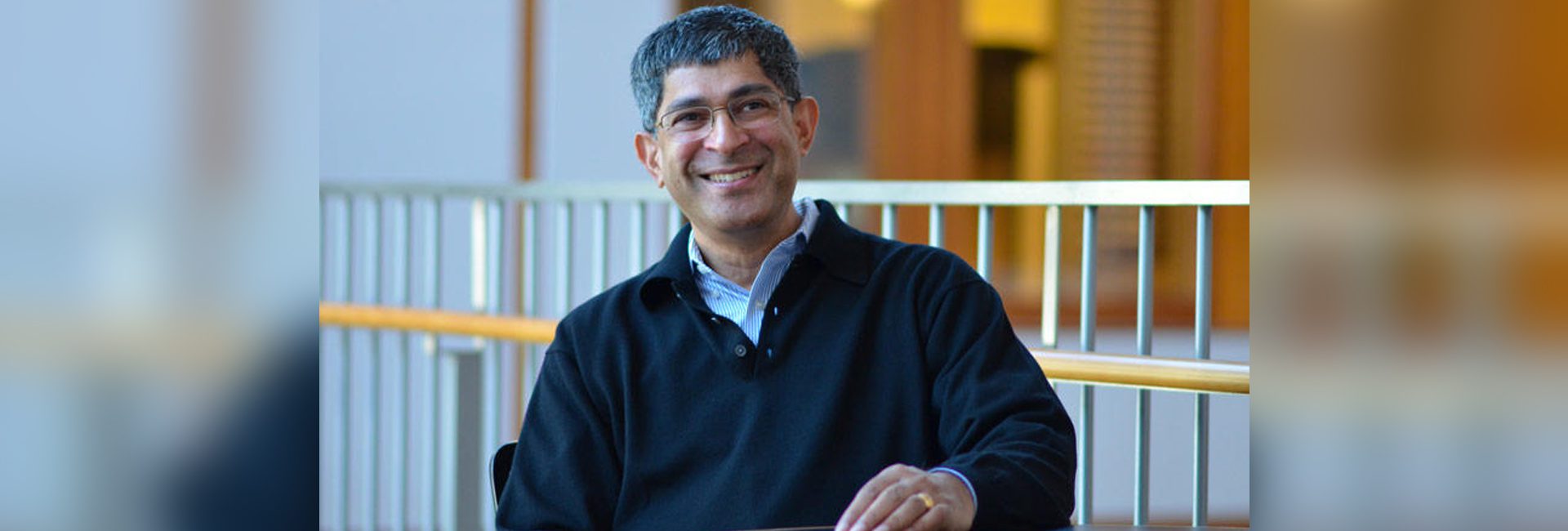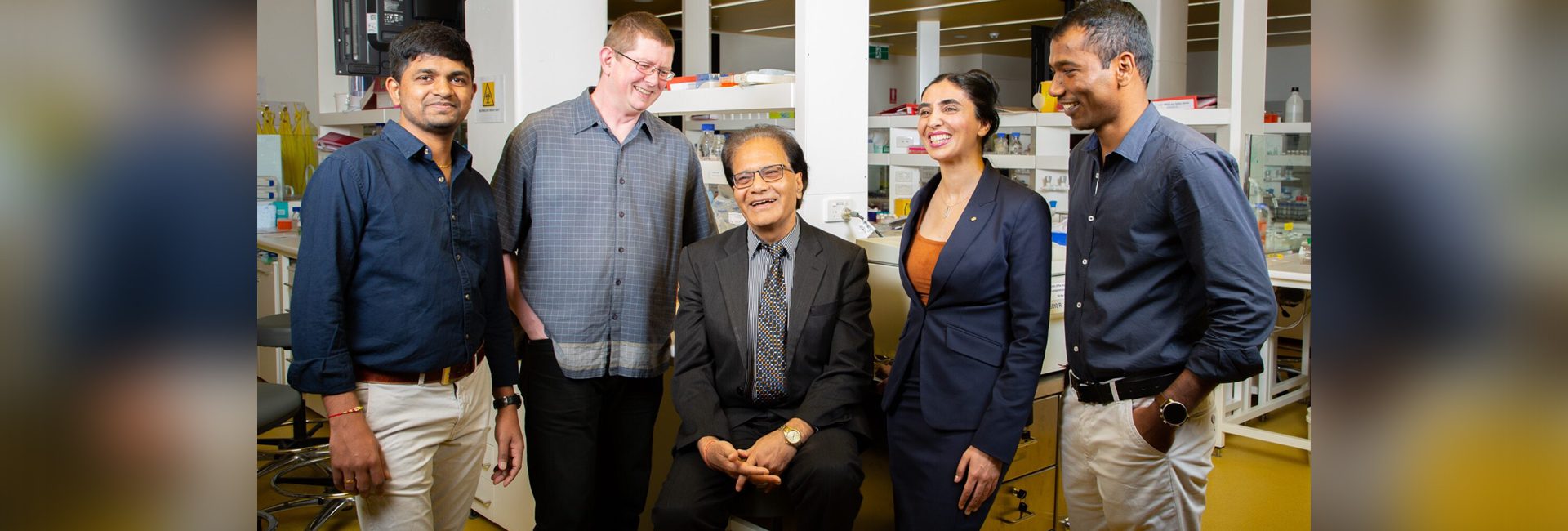(September 22, 2022) The archaic belief that “mathematics is not for women” has contributed greatly to the gender gap in the field. While girls are being encouraged to take up a career in science and technology, many steer clear of pure mathematical studies. Breaking all the stereotypes is Tamil-French mathematician, Nalini Ananthraman, who is decorated with three major awards in the field – Henri Poincaré Prize, Salem Prize, and Jacques Herbrand Prize. The Chair of Mathematics at the University of Strasbourg, Nalini was awarded the Infosys Prize (2018) recognising her path-breaking work in quantum chaos and allied areas. In 2020, the mathematician received the Frederic Esser Nemmers Prize in Mathematics “for her profound contributions to microlocal analysis and mathematical physics, in particular to problems of localization and delocalization of eigenfunctions”.

Nalini Ananthraman, mathematician
“I work with questions coming from physics but with a mathematical perspective. For the last 10 years, I’ve been working on equations describing how waves propagate—these could be sound waves, electromagnetic (light) waves, water waves, or waves in quantum mechanics,” the Global Indian said during a press interaction after winning the Infosys award, adding, “It is a privilege to create beautiful things without having to worry about their applications.”
Inspired by her parents
Born to a Tamil father and a French mother, who were both distinguished mathematicians, Nalini started in the world of numbers with a strong advantage. Speaking about her family, Nalini had told Bhavana magazine, “My father studied at the Tata Institute (TIFR) in Mumbai, and he left for France at the time of starting a Ph.D. to work. My parents met in Paris at the end of the 1960s. My mother still has a letter from her friend, the mathematician Michèle Vergne, who writes in that letter that she wanted to introduce her to a young Indian who had just then arrived in France.”

A young Nalini with her mother, Claire
A very bright student, Nalini rarely required any help with her studies. As her parents were professors at the University of Orléans, the young mathematician remembers having free access to the library, a place she “loved to spend her time the most.” Interestingly, while she was drawn to numbers from a very young age, music, and not maths, was her first choice of career. She wasn’t too keen on taking part in any mathematics competitions as well. “I wanted either to be a pianist or a researcher, but not necessarily in math. Physics, and even biology, also fascinated me then. I never participated in math competitions. No one suggested it, and I didn’t even know those competitions existed. I’m not sure I would have liked the idea of ‘training’ for such a competition,” she said during the interview.
It was during her high school years that she decided to pursue an undergraduate course in mathematics at the École Normale Supérieure in Paris in 1994. Intrigued by the subject, she did her post-graduation from the same university and later completed her Ph.D. at the Pierre and Marie Curie University in 2000, under the supervision of François Ledrappier. It was during her years in Paris, that the mathematician noticed the stark gender gap in her class. “For a long time, I did not think of the difficulties involved in being a woman doing mathematics. Only as I was preparing for my Ph.D. thesis, did I realise how few women there were at conferences, without being particularly affected by this fact,” she told European Women in Maths magazine.
Tackling the world of numbers
At 24, when most scholars are still looking for their research subject, Nalini has already earned her doctorate. What made her research papers even more interesting was that her ideas had a healthy overlap of topics from theoretical physics to pure mathematics. Her paper on understanding the fine topological features of geodesics on negatively curved manifolds fetched her the prestigious Henri Poincaré Prize in 2012 ‘for her original contributions to the area of quantum chaos, dynamical systems, and Schrödinger equations, including a remarkable advance in the problem of quantum unique ergodicity’.

Nalini, with other distinguished mathematicians at the Infosys Award event, 2018
“I liked theoretical physics and studied it together with math while I was an undergraduate. But some visits to an experimental lab convinced me that I actually preferred math. When I looked for a Ph.D. subject, I did not particularly want it to be at the interface with physics. My Ph.D. was in the field of dynamical systems. It was only in 2012, when I won the Poincaré prize, that the words “mathematical physics” became attached to my work,” shared the mathematician, who worked as visiting faculty at the University of California and Princeton, between 2009 and 2014.
In 2013, Nalini received the CNRS Silver Medal and two years later was elected as a member of the Academia Europaea, and was the plenary speaker at the 2018 International Congress of Mathematicians. Now a mother of two, the mathematician is a vocal advocate of women’s rights. Encouraging young girls to take up a career in maths, she added, “I would tell a young woman that the career of a mathematician is rather well suited for a woman; of course, it requires a lot of work but it provides some flexibility since one can organise one’s work. Right now, the scarcity of positions penalises women. I nevertheless do not see how one can think that a career as a mathematician is not appropriate for women.”
She added, “Now that I have children, I wonder more about these issues and realise the differences in the ways women and men view their careers. Sharing with my male colleagues the questions that come to my mind, such as the difficulty to come back to mathematics after maternity leave, is difficult, if not impossible. After a child’s birth, men intend to go on working as before, whereas women are ready to reorganise their schedule and dedicate less time to research. Having received prizes, at the time my children were born, it was expected that I would get back to research straight away. However, during my maternity leave, topics on which I was working were the object of research, and led to publications I was not invited to join.”
While she loves her research, she enjoys teaching young minds even more. “Were I to choose a career now, I think I would choose medicine. Medicine incorporates a human component that I somewhat miss in mathematics, particularly since I like working on my own. The human aspect of teaching provides a little compensation for this lack. In my professional activity, I enjoy the freedom we feel in understanding things. Doing mathematics is a creative work that emanates from person, which another person would not have done in the same way. In doing mathematics, I express something personal. It is a source of joy to know that, despite this personal aspect, the fruit of my work can be of interest to other mathematicians,” she had expressed during a press interaction.
- Follow Nalini Ananthraman on Twitter



